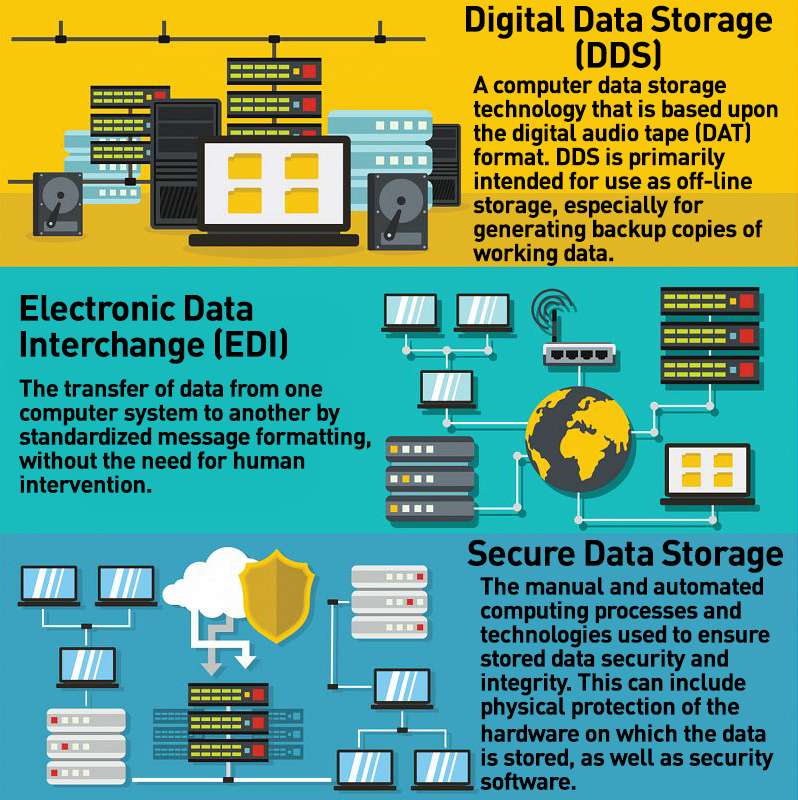The Influence of Effective Data Destruction on Cyber Security Risk Administration
Wiki Article
The Relevance of Effective Data Devastation Practices in Shielding Sensitive Details and Ensuring Computer Safety And Security
In a period where data breaches are progressively usual, the importance of reliable data destruction methods can not be overstated. Executing robust data destruction techniques not only mitigates these dangers yet additionally lines up with legal conformity requirements, guaranteeing that organizations support their track record and foster client count on.Understanding Information Destruction
Understanding information destruction is important in today's digital landscape, where delicate details can conveniently be endangered. Reliable data devastation entails not simply deleting data however making certain that data is irretrievable with comprehensive approaches. This process is essential for companies that take care of private client details, copyright, or interior documents, as any type of violation can bring about severe economic and reputational effects.
Data damage includes various strategies, including shredding physical media, degaussing magnetic storage devices, and using software-based remedies that overwrite data several times. Each method offers a specific function and needs to align with the sensitivity of the information being gotten rid of. Physical devastation is usually favored for difficult drives having extremely confidential data, while software application approaches could be enough for much less delicate details.
Additionally, sticking to sector requirements and laws, such as the General Information Defense Law (GDPR) or the Health Insurance Transportability and Accountability Act (HIPAA), is critical for compliance and to alleviate legal threats. Organizations needs to establish a durable data damage plan, train staff members on best methods, and routinely audit their procedures to guarantee that all delicate information is disposed of firmly and successfully.
Risks of Inadequate Practices
Poor information damage methods expose organizations to considerable risks that can have far-reaching effects. When sensitive details is not effectively disposed of, it stays at risk to unapproved accessibility, which can result in data violations and identity theft. Such cases not just jeopardize the safety of individuals but additionally tarnish the organization's credibility, leading to a loss of client count on and possible financial consequences.Furthermore, governing compliance is significantly rigorous in numerous markets. Failing to stick to data destruction regulations can result in significant penalties and legal activities against organizations. These charges can draw away and strain economic resources interest from core business operations.
On top of that, the misuse of recurring information can cause intellectual property theft or business espionage, jeopardizing competitive advantages (data destruction). The impact of insufficient data devastation extends past prompt economic losses; it can also result in long-term damage to brand stability and market setting

Organizations must identify that information security is not exclusively regarding stopping breaches; it additionally includes the liable management of information throughout its lifecycle. Ignoring effective data devastation procedures can have catastrophic effects, emphasizing the requirement for robust procedures to reduce these threats.
Best Practices for Data Devastation
Implementing reliable data destruction methods is essential for protecting delicate information and preserving conformity with regulatory criteria. Organizations ought to take on a multi-faceted strategy to make sure that information is irretrievable, therefore protecting against unauthorized accessibility and potential violations.First, information should be categorized based upon level of sensitivity, allowing companies to apply suitable damage methods customized to the degree of risk. For digital information, utilizing software-based data-wiping devices that abide by sector standards can properly overwrite existing data. Physical devastation approaches, such as shredding or degaussing, are vital for tools that keep delicate information, guaranteeing total eradication.
Developing a clear data retention policy is essential, outlining exactly how long various sorts of information ought to be kept prior to devastation. Regular audits of data storage space systems are also necessary to recognize outdated or unnecessary information needing elimination.
Moreover, training staff members on the value of data damage and the specific protocols to adhere to fosters a culture of security within the organization. Lastly, keeping see this here documents of data destruction processes gives responsibility and sustains compliance with interior plans and external guidelines. By sticking to these ideal practices, companies can considerably mitigate the dangers connected with data exposure.
Legal and Compliance Considerations

Failure to adhere to these guidelines can lead to severe penalties, including significant penalties and reputational damage. Organizations must execute a durable data devastation plan that aligns with these lawful frameworks and supplies clear standards on the appropriate methods of information disposal, whether physical shredding or electronic wiping.
In addition, keeping documents of data destruction activities is important for demonstrating conformity during audits or assessments. By focusing on lawful and conformity factors to consider, organizations can enhance their data safety pose and foster trust with customers and stakeholders, ultimately adding to an extra protected information management atmosphere.
Advantages of Effective Information Devastation
Effective data devastation methods prolong beyond mere compliance; they use considerable advantages to companies that prioritize them. By ensuring that sensitive details is irretrievably damaged, companies minimize the risk of information violations and the potential financial repercussions connected with them. This proactive strategy not just safeguards against unapproved accessibility however also boosts the general trustworthiness of the company in the eyes of customers and stakeholders.Applying robust information damage techniques, such as physical destruction of storage gadgets or sophisticated information cleaning methods, adds to the fortifying of a company's cybersecurity position. data destruction. It reduces the likelihood of intellectual building burglary and safeguards exclusive info, consequently keeping a competitive side in the marketplace

Final Thought
In final thought, effective information devastation practices are crucial for safeguarding sensitive information and enhancing total computer system safety and security. By applying comprehensive approaches such as degaussing, shredding, and software program overwriting, organizations can reduce the risks linked with unapproved access and data breaches. Adherence to regulatory criteria, including GDPR and HIPAA, more enhances conformity and shields against lawful effects. Ultimately, a commitment to robust information destruction strategies fosters a society of duty, consequently reinforcing a company's cybersecurity pose and maintaining customer trust.
Report this wiki page